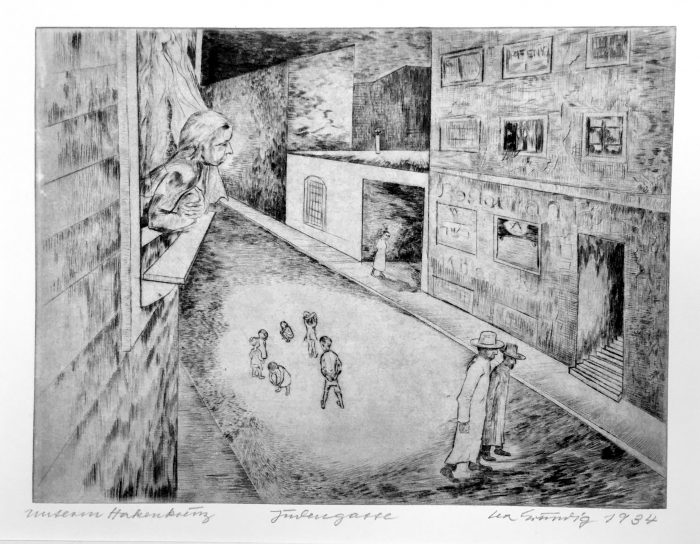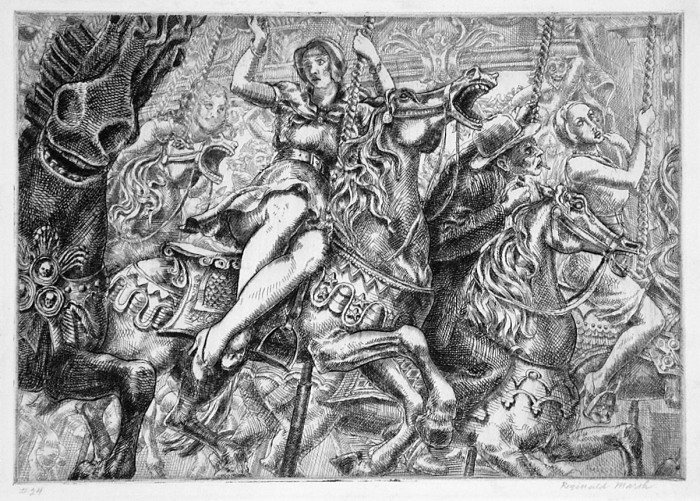Judengasse in Berlin
Tuesday, January 31st, 2017
Lea Grundig-Langer (1906-1977), Judengasse in Berlin (Jewish Quarter in Berlin), 1934, signed and dated in pencil lower right, titled lower center, cycle name (Unterm Hakenkreuz) lower left). In excellent condition, printed on a heavy cream wove paper, the full sheet, 9 3/4 x 12 7/8 inches, the sheet 16 1/2 x 21.
Provenance: Galerie St. Etienne, New York, NY.
A fine fresh impression, printed with carefully drawn plate tone.
Lea Langer was born in Dresden in 1906 where her family was part of the Jewish community. She studied at the city’s Decorative Arts and Crafts Academy before progressing, in 1924, to the prestigious Saxon Art Academy: here she was admitted into the Masterclass of Otto Gussmann where fellow participants included Otto Griebel, Wilhelm Lachnit und Hans Grundig. At the Academy she also got to know Otto Dix, whom she would come to regard as one of the most influential of her mentors.
She remained at The Academy till 1926, when she left the Jewish Community, joined the Communist party, and shortly thereafter married Hans Grundig. Her work was banned by the Nazis, who put her in prison for a short time; she later emigrated to Palestine, then back to Europe and eventually East Germany, where she was active politically while teaching and practicing her art.

